 Tags: community, discourse/language, theory, ferdinand de saussure, langue, parole, post-structuralism, speech act, structuralism, 00 to 05 mins Year: 2011 Length: 1:27 Access: YouTube Summary: This home video of 2-year-old Khaliyl Iloyi rapping with his father can be used to illustrate Swiss linguist Ferdinand de Saussure's (1857-1913) concepts of langue and parole which, for Saussure, comprise a larger system of signs he calls language. Langue entails the total system of possibilities; it is the abstract set of structured rules that a given speech community internalizes. Parole, on the other hand, consists of individual speech acts and the message contained within them. Saussure argues that individuals don't pick and choose what belongs to langue or parole; rather, langue is social (in that it operates according to a set of rules that are in place before and after our existence) and parole is individual. Another way Saussure understood this distinction was that langue is a static, synchronic system while parole is diachronic and contingent. This video clip illustrates how, even at age two, Khaliyl understands the basic underlying structure of language (langue), even if he has yet to master the meaning of individual speech acts (parole). He is engaging in the social enterprise of langue in that he has internalized the abstract rules of language for his speech community, even though a meaningful message has yet to be put into practice (parole). Instructors should point out that Khaliyl's rap does not map perfectly onto Saussure's notion of langue, in that Saussure would consider grammar an example of the structured rules of language---clearly, Khaliyl is not adhering to any grammatical set of rules. Similarly, Saussure would include performance as part of the meaningful speech act that makes up parole; here, Khaliyl obviously demonstrates an understanding of the appropriate performance of the speech act he is attempting to convey. Nonetheless, viewers can still be encouraged to use the clip in order to think about the ways in which Khaliyl's rap does and does not illustrate classical understandings of langue and parole. This discussion of Saussure would be useful in a social theory course that examines structuralism (including the theories of Claude Lévi-Strauss), as well as post-structuralism, as it can be used to illustrate the ideas against which the post-structuralists were reacting. Submitted By: Valerie Chepp
2 Comments
 Tags: class, community, crime/law/deviance, inequality, intersectionality, methodology/statistics, prejudice/discrimination, race/ethnicity, rural/urban, ethnography, gentrification, housing, urban poverty, visual sociology, 21 to 60 mins Year: 2005 Length: 52:00 Access: no online access Summary: Directed by sociologist Sudhir Venkatesh, this documentary film is based on ethnographic field research conducted by Venkatesh at the (now demolished) Robert Taylor Homes public housing development in Chicago, IL. A description of the film is provided on the film's website: "In February 2002, families living in the Robert Taylor Homes public housing development were given a 180 day notice of eviction. In six months, the community that had been their home for generations would be demolished. DISLOCATION chronicles the lives of tenants in one building as they move through the six-month relocation process. The filmmakers follow three families as they prepare for their own move and as they help others around them. DISLOCATION is a story of a community coping with its own impending demise. It is a tale of courage, hope, and survival." This film is an ideal compliment to most topics covered in an urban sociology course, which include discussions of gentrification, urban poverty, racism, underground economies, community and family support networks, police interactions, and much more. The ideas explored in the film are expanded in more detail in Venkatesh's books, American Project: The Rise and Fall of a Modern Ghetto (2000) and Gang Leader for a Day: A Rogue Sociologist Takes to the Streets (2008), which are based on the same ethnographic field research. The film (and books) would also be excellent to use in an ethnography course, and could help guide class discussions around written vs. visual ethnographies, and the (subjective) role of the ethnographer and her relationship to her research subjects. To gain access to the film, check out your university library or you can find purchasing information here. Submitted By: Valerie Chepp 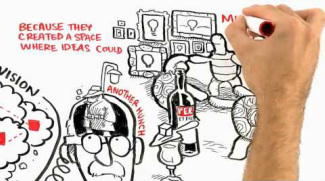 Steven Johnson explains the source of good ideas Tags: community, durkheim, knowledge, organizations/occupations/work, science/technology, theory, creativity, innovation, liquid networks, sociological perspective, steven johnson, 00 to 05 mins Year: 2010 Length: 4:07 Access: YouTube Summary: What is sociology? In broad terms, sociology is the study of society. However, this answer is often unclear or unsatisfying to an incoming class of Sociology 101 students. This clip illustrates Steven Johnson's theory of where good ideas come from, and can help explicate to students what makes the sociological perspective so unique. Instructors can begin by saying that, while most anything can be studied from a sociological perspective, some sociologists have strategically selected sites of inquiry that, at first glance, appear thoroughly individualistic in nature. This strategy is an effort to illuminate how social forces shape even the most seemingly personal of phenomena. Here, instructors can point to Émile Durkheim's study of suicide as a particularly famous disciplinary example of this (which will likely be covered later in the semester). Using a similar strategy, instructors can use the example of creativity and "good ideas" to show how social forces have a profound impact on innovation, a phenomenon that, like suicide, is often characterized as a quintessentially individual act, largely informed by psychological forces. Although some people approach creativity from a psychological viewpoint (e.g., see here), the sociological perspective can be brought into focus for students by comparing such individualistic accounts to Johnson's concept of liquid networks and his use of historical evidence to show the importance of social connectivity and collaboration for innovation. Johnson stresses the need for interconnected social spaces, organizations, and systems for the cultivation of good ideas. Johnson presents a slightly elaborated version of this argument in his TEDTalk. For other clips on The Sociological Cinema that use illustration techniques to convey theoretical arguments, click here and here. I would like to thank Open Culture and Brain Pickings for suggesting these clips. Submitted By: Valerie Chepp 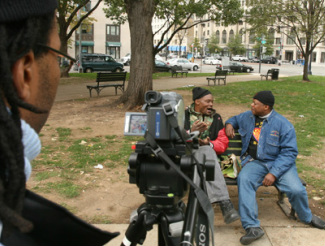 Tags: community, prejudice/discrimination, rural/urban, activism, affordable housing, documentary research methods, homelessness, 21 to 60 mins Year: 2008 Length: 29:11 Access: STREATS TV Summary: This episode of STREATS TV portrays an insider's point-of-view on many of the day-to-day realities and struggles facing homeless people, struggles that non-homeless people largely take for granted, which include access to transportation options, safe places to sleep, locations to shower, and places to use the restroom when you "gotta go." Putting a human face on homelessness, this video was created, filmed, acted, and directed by people who are or recently were homeless, focusing on the homeless community in Washington, DC. Other topics discussed include challenges involved in accessing social services, managing public perceptions of the homeless, and issues of activism and community-building among the homeless. This clip would be useful to show students in a social problems class, particularly during lessons on homelessness, affordable housing, urban gentrification/community displacement, welfare policies and our social safety net, among others. Moreover, the clip might be useful to use as a template for a class assignment in which students are required to create a DIY video project highlighting a social issue of concern. Submitted By: Ralph ("Spirit Man") Dantley and Valerie Chepp 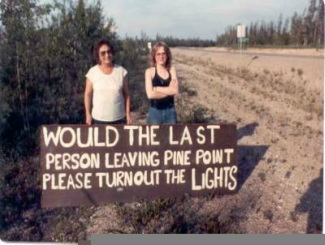 Tags: community, methodology/statistics, rural/urban, community studies, digital storytelling, resource-dependent communities, rural sociology Year: 2011 Length: n/a Access: National Film Board of Canada Summary: "Welcome to Pine Point" has all the elements of a classic sociological community study: It is set in a single-industry town. It lets us peek into the lives of four archetypical characters. And, perhaps most importantly, it is set in a real live place that no longer exists. Built in the 1960s and closed down and razed a little over twenty years later, Pine Point, like Middletown and Cornerville before it (see Robert and Helen Lynd's "Middletown" and "Middletown in Transition" and William Foote Whyte's "Street Corner Society"), is no longer locatable on a map, but lives in the memories and yellowed round-cornered photos of its residents. This interactive website, complete with moving images, text, and interactive features, would be an ideal resource for students to engage in an out-of-class and/or group assignment, and would work well in a rural sociology or sociological methods class. Submitted By: Audrey Sprenger 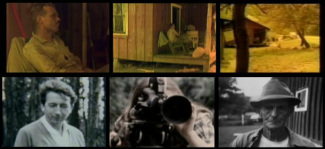 Tags: community, methodology/statistics, rural/urban, appalachia, ethnography, poverty, rural sociology, 21 to 60 mins Year: 2000 Length: 58:00 Access: no online access, PBS trailer Summary: "Stranger With A Camera" lays bare the literal and figurative differences between being a sociologist versus being a sociological subject, as well as who counts as an "insider" versus an "outsider" in a small community. Set in the mountains of Central Appalachia, an iconic field site and setting for many twentieth century social scientists and documentary-makers, it tells the story of Canadian filmmaker Hugh O'Conner and how in the summer of 1967, Hobart Ison, a local landlord, angry about O'Conner's presence on his property, (as well as media representations of Appalachia in general), shot and killed O'Conner. Produced with great methodological insight and raw sensitivity by Director Elizabeth Barret and Editor Lucy Massie Phenix, two women with close relationships to the film's setting, (Barret was born, raised and still lives in Central Appalachia, Phenix is from Kentucky), "Stranger" brings into focus then blurs again many of the gray areas which emerge not only with regards to questions about what is right and what is wrong with the practice of social science, but also the everyday ways members of a community come together and interact with one another, particularly when there is a stranger with a camera around. When Ison's violent act finally came to trial it was, in many ways, excused by his neighbors. Though it is difficult to tell whether their support was an act of local solidarity since many of them, (including the coal miner O'Conner was trying to get a photograph of when he was instantly killed by Ison's deadly shot), were not only Ison's confreres and kin, but also, his tenants. Still, in the end there truly is a difference, "Stranger" teaches us, between living in a place versus simply passing through, even when we care about or even love it so much we want to document it -- like O'Conner (and, now, Barret and Phenix) did Ison's home town. Submitted By: Audrey Sprenger 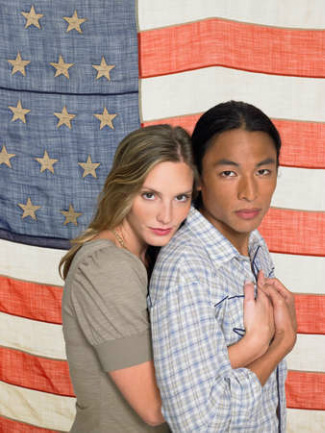 Multi-racial and multi-ethnic identities are on the rise Tags: children/youth, community, demography/population, immigration/citizenship, marriage/family, multiculturalism, nationalism, race/ethnicity, social construction, 00 to 05 mins Year: 2011 Length: 5:16 Access: New York Times Summary: This video accompanies a New York Times article about mixed race students on college campuses in America. Profiling students at the University of Maryland, young adults speak out about multi-racial and multi-ethnic identities, relationships, and "racial distinctions of behavior" (as one student puts it). Driven by increasing immigration and interracial marriages, young people today represent a significant and unprecedented demographic shift in the United States. Students respond to this changing environment by raising awareness about multi-racial and multi-ethnic issues and creating a safe space for a multi-cultural community on college campuses. This clip would be useful for initiating class discussions around racial and ethnic identities, social constructions of race, as well as a critical conversation around racial and ethnic behaviors, interactions and performances (stemming from the student's remark about "racial distinctions of behavior"). Finally, students can use the clip to contemplate the future of race and ethnicity in America, and the potential for change. Do students think racism will disappear as America becomes increasingly multi-racial and multi-ethnic? Submitted By: Valerie Chepp 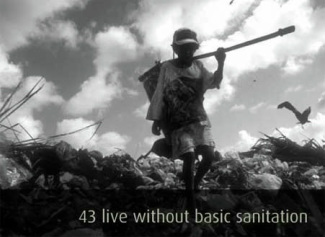 What if the world were a village of 100 people? Tags: community, demography/population, globalization, inequality, methodology/statistics, subtitles/CC, 00 to 05 mins Year: 2010 Length: 3:15 Access: YouTube Summary: Updated for 2010, this short clip paints a portrait of the earth based on if the world were comprised of a 100-person community. Given that large numbers can be difficult to put into perspective (and thus important information about the world runs the risk of becoming meaningless or unremarkable), this video illustrates for students how the global community fares on such indicators as hunger, religious affiliation, literacy, wealth, education, government expenditures, among many others. The clip is not only useful for helping students understand global inequality and differences, but it also reminds students of the enormity of their own social privilege relative to the majority of the world. Submitted By: Valerie Chepp 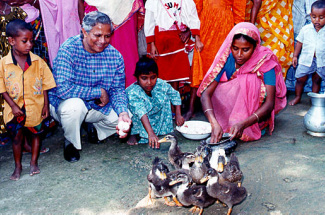 Economist Muhammad Yunus and local villagers Tags: community, economic sociology, organizations/occupations/work, global development, grameen bank, income, microcredit, microfinance, networks, poverty, social capital, women's autonomy, women's empowerment, 06 to 10 mins Year: 2010 Length: 9:45 Access: YouTube Summary: This clip profiles the founding of the Grameen Bank by economist Muhammad Yunus and its development in rural Bangladesh. Both the bank and Yunus were awarded the Nobel Peace Prize in 2006 "for their efforts to create economic and social development from below." Specifically, the bank is known for microcredit, or giving relatively small, low interest loans to poor people who seek to create businesses. Yunus explains that the world's financial system effectively rejects two-thirds of the world population, but the concept of microcredit is innovative in that it allows such people to participate. The lending system is peculiar in that it requires no collateral, no legal contract, and 96% of the loans are made to women. Each week these loan recipients gather in a center meeting to pay their installments directly to a regional Grameen banker and to discuss shared challenges. While much has been written on the Grameen Bank as an institution which promotes social capital, women's empowerment, and the eradication of poverty, I think this clip is particularly useful for setting up a discussion of social capital. Social capital is often conceived of as a form of capital which inheres in social relations and enhances the ability of actors to draw upon the resources of neighborhood and community. Following Robert Putnam (2001), communities can even be described as having "stocks" of social capital. After watching this clip, students can be encouraged to discuss how such stocks of social capital might be increased through the introduction of microcredit. More than simply flooding a community with material "money" capital, the lending system provides a pretense for women to leave their homes, nurture friendships, and share resources with each other. Note that this video was made by Izzit, which is a company that produces a variety of educational videos. Submitted By: Lester Andrist  Younger members of the bear subculture are often called "cubs." Younger members of the bear subculture are often called "cubs." Tags: community, gender, lgbtq, sex/sexuality, bear masculinity, masculinity, identity politics, 06 to 10 mins Year: 2007 Length: 7:25 Access: YouTube Summary: This cip chronicles a brief history of the bear subculture within the LGBTQ community. In the clip, gay men who belong to the subculture talk about what the group means to them. This clip might be useful for an instructor who seeks to discuss the way sexual practice today is a salient basis upon which to build an identity politics. Submitted By: Lester Andrist |
Tags
All
.
Got any videos?
Are you finding useful videos for your classes? Do you have good videos you use in your own classes? Please consider submitting your videos here and helping us build our database!
|
 RSS Feed
RSS Feed
